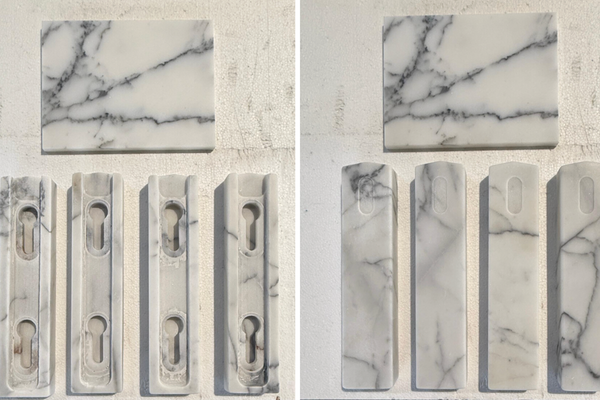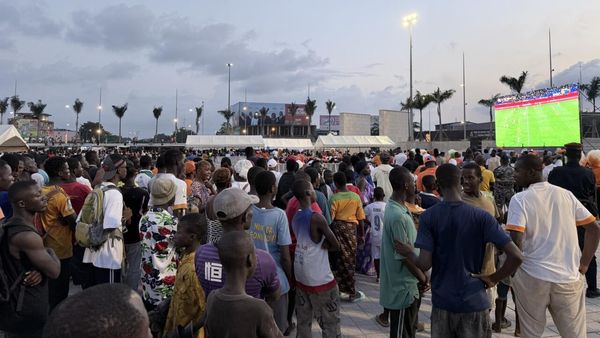Time is a funny thing. If enough of it passes, you can forget the way you once felt. Two years ago, Scoot Henderson was viewed as a future NBA star who would have been the consensus first overall pick had it not been for the existence of the prodigious Victor Wembanyama.
Unfortunately, a less than stellar rookie campaign and Henderson’s place on the bottom-feeding Portland Trail Blazers has led many to overlook the once highly touted floor general. However, this oversight doesn’t change Henderson’s immense potential, and in year two, the former third overall pick of the 2023 Draft is beginning to live up to his name.
Offensive Improvements In Year Two
During Portland’s most recent game against the Miami Heat, Tom Haberstroh, the broadcast’s Analytics Insider, pulled up a stat encapsulating Henderson’s sophomore development on offense. In the four games prior to Tuesday’s contest, Henderson was averaging 25.3 points and 7.8 assists with a 70.7 effective field goal percentage. That effective field goal percentage is the highest mark of a four-game stretch by any player under the age of 21 averaging at least 25 points and seven assists — putting him ahead of guys like LeBron James, Luka Doncic and Trae Young.
Henderson is doing exactly what you want every young player to do: Getting more efficient with age. After posting an abysmal true shooting percentage of 48.5 percent (eighth percentile) as a rookie, he’s up to a more respectable 54.3 percent (33rd percentile). Most importantly, his efficiency improvement is coming from all three major regions on the floor (rim, midrange and threes).
Henderson’s rim percentage (52.3 percent, eighth percentile) isn’t satisfactory, especially for someone who attacks downhill as often as he does (90th percentile rim frequency among point guards, per Cleaning the Glass). Still, it is a sizable jump from last year (see chart above), and at least partially excusable, given Portland’s roster construction.
The team hitting the most threes per game in the NBA, the Boston Celtics (17.8), is also the second-most efficient team around the rim (70.9 percent). Their 3-point shooting forces defenses to get out of the paint and defend the perimeter, which makes it easier for drivers to finish around the rim.
On the flip side, the Trail Blazers sit 25th in 3-pointers per game (12.2). This lets teams ignore them beyond the arc and focus on protecting the interior. So, instead of his teammates simplifying life for him, Henderson has to deal with a lot more obstacles than the average driver strolling down the lane.
Once the Blazers surround Henderson with more shooting, expect his field goal percentage at the hoop to rise.
Something we didn’t expect to happen, at least this early in his career, was his emergence as a competent shooter. During the 2023 Draft cycle, many scouting reports cited his outside shot as a weakness that would need to improve for him to reach his ceiling. Fortunately, his mechanics have always been sound, and he’s starting to put up percentages matching the quality of his release.
Henderson is hitting 41.2 percent (48th percentile) of his midrange shots and 35.2 percent (47th percentile) of his threes. He’s also been an 80 percent free-throw shooter (325 attempts) to start his career — adding further credence to the fact he’s become a passable jump shooter and not just the beneficiary of a hot shooting stretch.
Scoring isn’t the only facet of his offensive game he’s expanded. He’s unlocked a playmaking upgrade to pair with his scoring leap. One of the best publicly available measures of a player’s passing ability is Ben Taylor’s Passer Rating metric, which is an estimate of a player’s passing ability on an “approximately” 1-10 scale.
This season, Henderson’s Passer Rating is 6.5 (78th percentile). Compared to his rookie year, that’s a 1.5-point bump and 90th percentile improvement from 2023-24 to 2024-25. He still misses more advanced skip passes, instead opting for conservative kickouts. But he’s only 20 years old and will surely add more to his playmaking repertoire as he gets more reps under his belt.
Room For Growth On Defense
Unlike Henderson’s offense, his defensive growth is much trickier to pinpoint. For the second straight year, he’s one of the worst defenders in basketball, according to Defensive Estimated Plus-Minus (third percentile). The Blazers’ defense is also 1.4 points worse per 100 possessions when he’s on the floor versus when he’s on the bench (38th percentile).
But like his poor finishing numbers, his poor defensive on-off can be credited to variables outside of his control. The Blazers have suffered some terrible opponent shooting luck when Henderson is playing. When he’s on the court, opposing teams are shooting 39.7 percent from downtown (sixth percentile).
When you watch the tape, you see a guy who is more bought in to the cause. He’s willing to use his supreme physical tools and be an impactful player on that side of the floor. Similar to his scoring numbers, Henderson’s steal and block rates are up from his unremarkable rookie year.
It isn’t all sunshine and rainbows, though. He continues to have moments of aloofness when not directly involved in the action — surrendering back cuts or forgetting to stick to ball-side shooters. He also has a tendency to work harder, not smarter, on defense. A perfect example is the clip below, where Henderson overplays the handoff, so Terry Rozier burns him by rejecting it and driving baseline.
Still, given his blend of power and speed, I find it difficult to believe he’ll be a net negative defender once he reaches his prime. In fact, I think, with some improvements to his awareness and defensive feel, he can become one of the better guard defenders in the league.
If that happens, the bar he needs to reach offensively to become an All-Star goes down, making it less crucial he be a hyper-efficient scorer or elite distributor. In any event, given how forgettable his rookie campaign was, the fact we can once again map out a potential pathway to Henderson becoming an All-Star means he’s certainly worth keeping tabs on moving forward.







